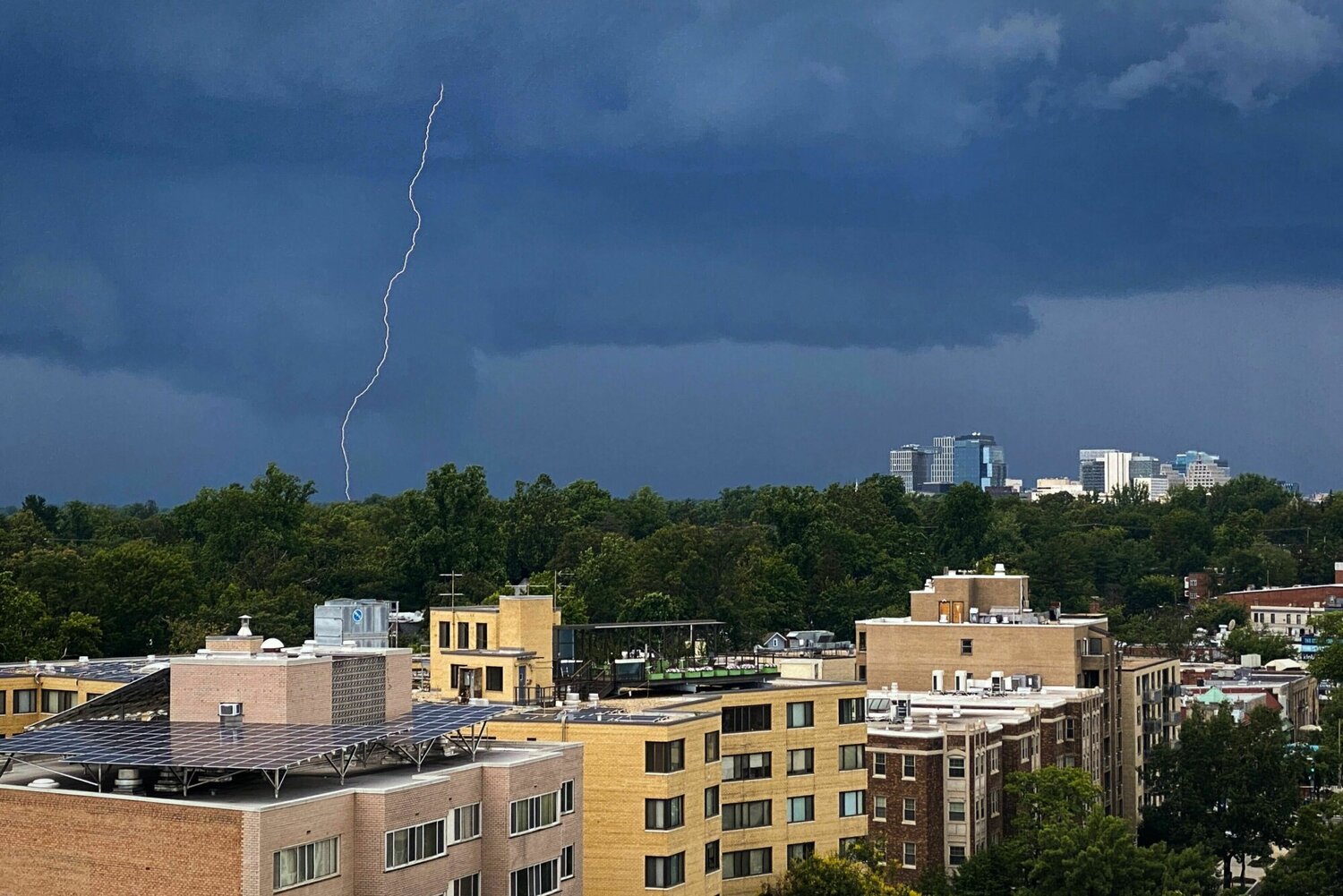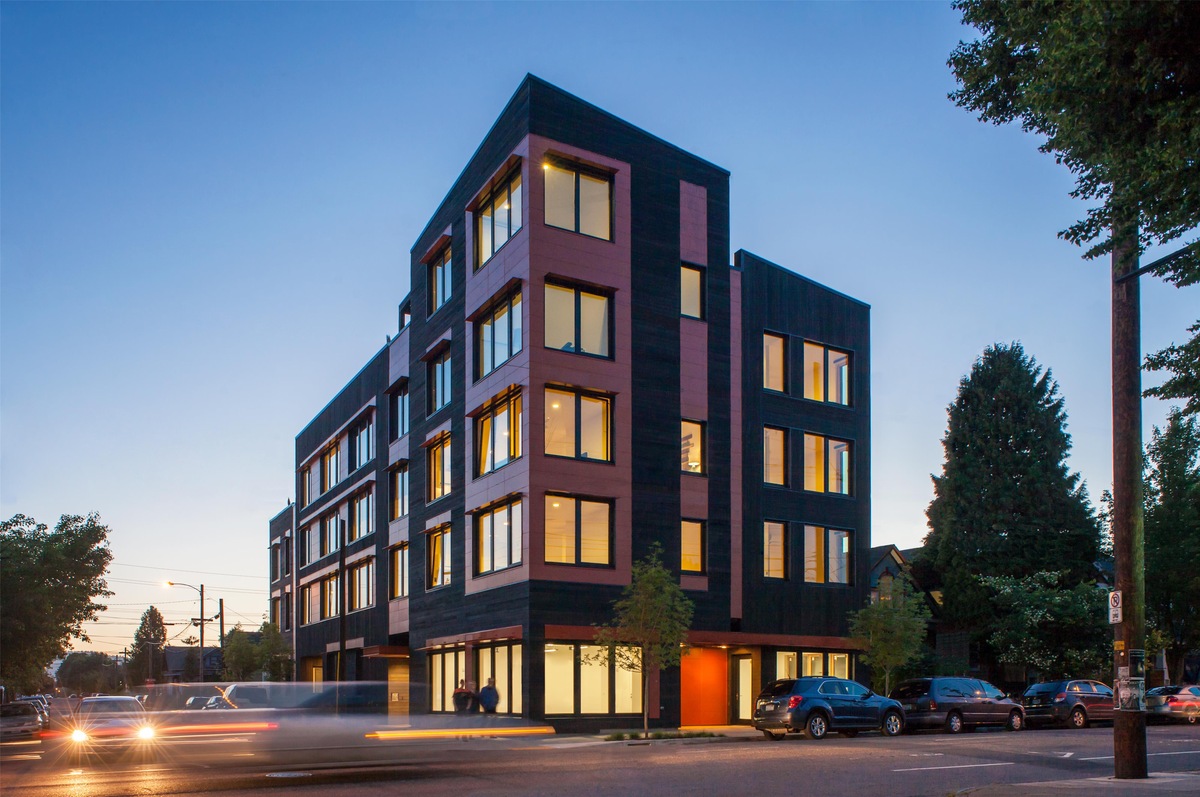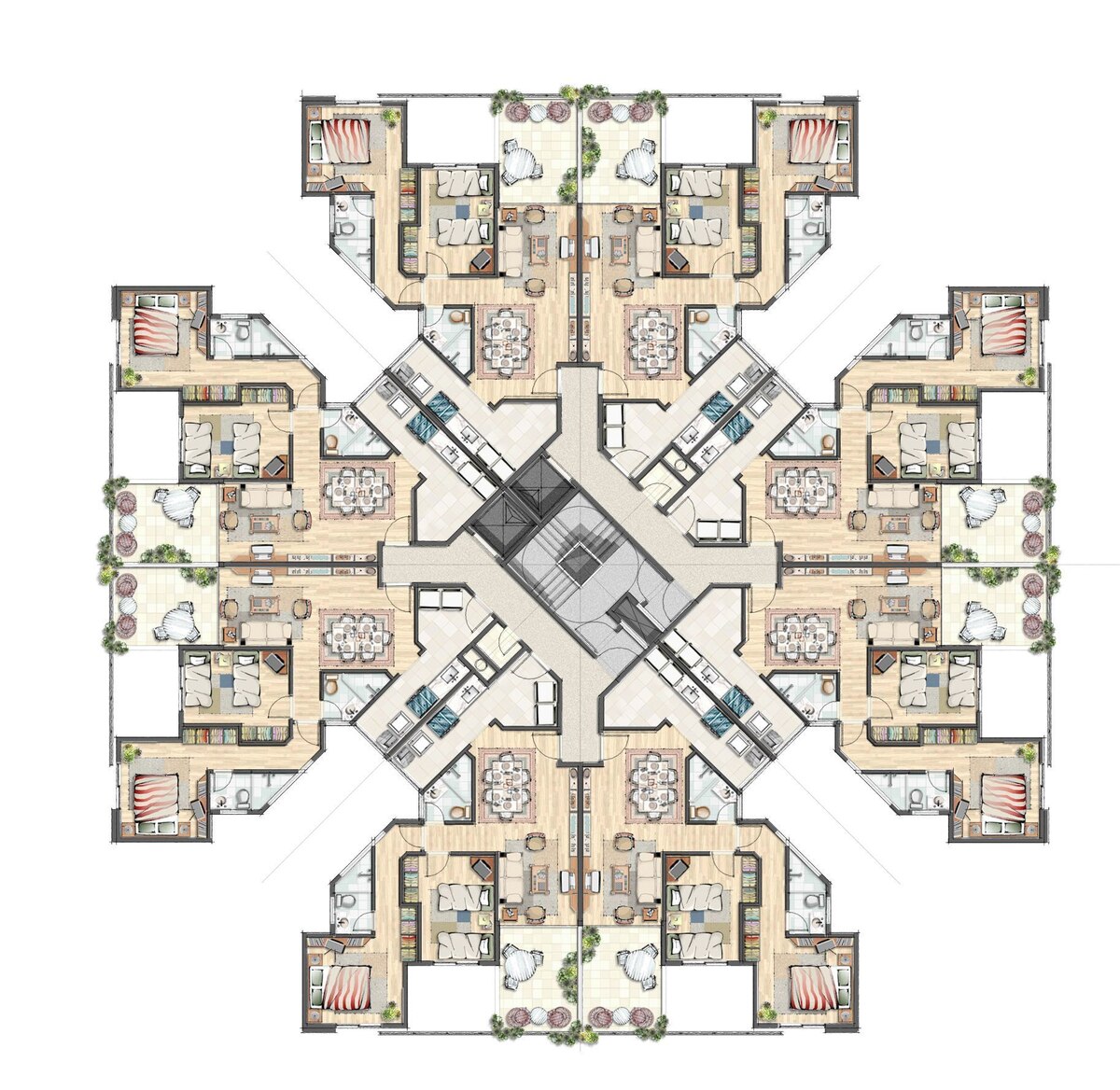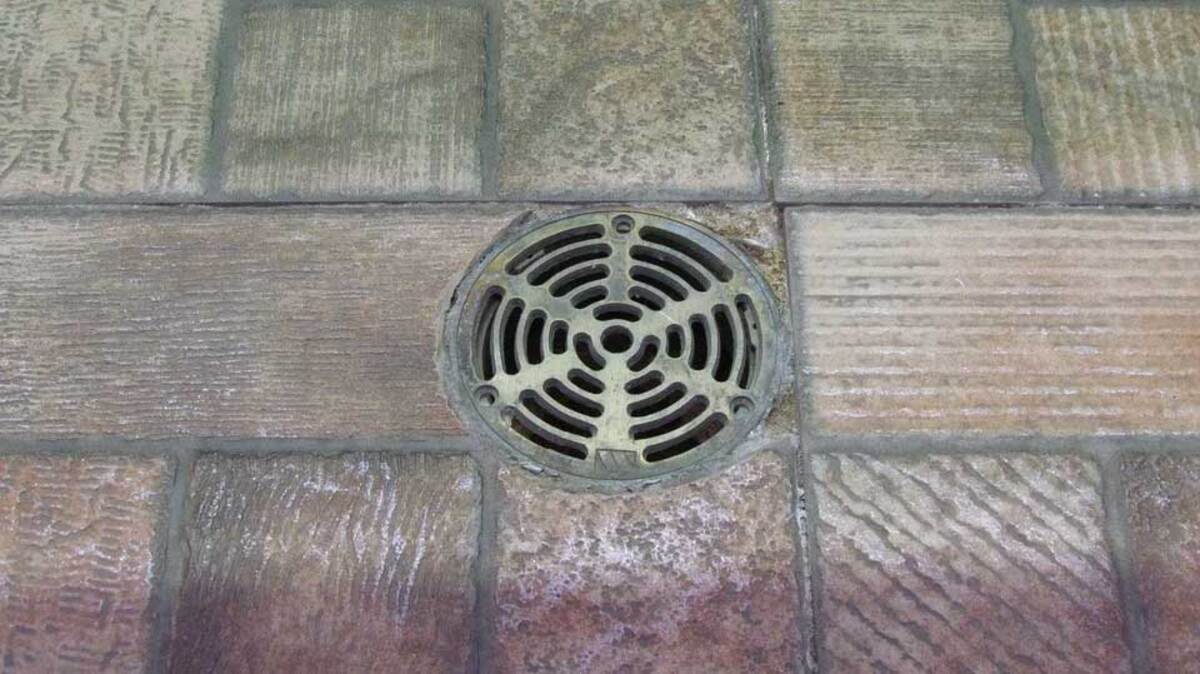Home>diy>Building & Construction>Where To Go For Tornado In Apartment Building


Building & Construction
Where To Go For Tornado In Apartment Building
Modified: December 7, 2023
Looking for a safe place during a tornado in an apartment building? Discover the best building construction options to find shelter and stay protected.
(Many of the links in this article redirect to a specific reviewed product. Your purchase of these products through affiliate links helps to generate commission for Storables.com, at no extra cost. Learn more)
Introduction
Living in an apartment building can offer many conveniences and amenities, but it can also present unique challenges when it comes to severe weather events such as tornadoes. Unlike houses with basements or sturdy structures, apartment dwellers may be unsure of the safest place to seek shelter when a tornado warning is issued. However, with careful planning, knowledge of building safety features, and awareness of community resources, apartment residents can take measures to ensure their safety during a tornado.
When it comes to tornado safety in apartment buildings, there are several factors to consider. The construction and age of the building, presence of a basement or storm shelter, and the location of your apartment within the building can all influence the best course of action. Additionally, being aware of warning signs and alarms, communication methods, and evacuation procedures can greatly contribute to your preparedness and response during a tornado event.
Before taking shelter during a tornado, it is important to assess the situation and consider factors such as the severity of the weather, the proximity of the tornado, and the recommendations issued by local authorities. While seeking shelter inside your apartment may be feasible in certain situations, it is best to have a backup plan in case evacuation becomes necessary.
In the following sections, we will explore the factors to consider before taking shelter, how to choose the safest spot in an apartment building, common areas to seek shelter, recommended equipment and supplies, establishing a tornado emergency plan, staying informed during a tornado event, evacuation procedures and safety measures, and understanding tornado warning signs and alarms.
It is essential to approach tornado safety in apartment buildings with the utmost care and preparedness. By familiarizing yourself with the information presented in this guide, you will be better equipped to navigate the challenges that tornadoes present and prioritize your safety and that of your neighbors.
Key Takeaways:
- Prioritize safety in apartment buildings during tornadoes by considering building construction, designated shelter areas, and emergency plans. Equip yourself with supplies and stay informed to navigate tornado events effectively.
- Establish communication networks with neighbors, understand warning signs and alarms, and practice situational awareness to ensure safety during tornadoes in apartment buildings. Stay prepared, informed, and proactive for collective safety.
Read more: Why Do You Go In A Bathtub During A Tornado?
Factors to Consider Before Taking Shelter
When it comes to tornado safety in apartment buildings, there are several important factors to consider before deciding on the most appropriate course of action in seeking shelter. These factors include the construction and age of the building, the presence of a basement or storm shelter, and the location of your apartment within the building.
The construction and age of the building play a crucial role in determining its ability to withstand the strong winds and debris associated with tornadoes. Older buildings, especially those constructed before stringent building codes were implemented, may have weaker structures that are more susceptible to damage. It’s important to be aware of the building’s construction materials and design when assessing its safety during a tornado.
If your apartment building has a basement or storm shelter, it is generally the safest place to seek shelter during a tornado. Basements offer the greatest protection from high winds and flying debris, as they are typically located below ground level. In the event that your building does not have a designated storm shelter, consider alternatives such as interior stairwells, bathrooms, or closets on lower floors. These areas provide more structural support than exterior walls or windows.
The location of your apartment within the building is another important factor to consider. If your apartment is situated on higher floors, seeking shelter in a lower-level apartment or a common area like a community room or laundry room may be a safer option. Higher floors are more exposed to the intensity of the storm, whereas lower floors offer more stability and protection.
It is also important to pay attention to the recommendations and instructions provided by local authorities during severe weather events. Stay tuned to weather updates and follow the guidance of emergency management agencies. They may provide specific instructions for apartment residents, such as designated meeting points or evacuation procedures.
Lastly, take into account your personal situation and capabilities. If you have mobility issues or special needs, it’s essential to plan accordingly. Discuss your situation with property management or neighbors, and ensure you have a support network in place to assist you during tornado events.
By considering these factors, you can make informed decisions about the safest course of action to take before seeking shelter during a tornado. Remember, it’s always better to be prepared and proactive in order to prioritize your safety and the safety of those around you.
Choosing the Safest Spot in an Apartment Building
When a tornado warning is issued, it is crucial to quickly find the safest spot within your apartment building. While some apartment buildings may have designated storm shelters or basements, others may not have those options available. In such cases, it’s important to be aware of the safest areas within the building where you can seek shelter.
One of the safest spots in an apartment building during a tornado is an interior room without windows. This could be a bathroom, closet, or hallway. These areas typically offer more structural support and can protect you from flying debris. Stay away from windows, as they can easily shatter during the force of the storm.
If your apartment building has an interior stairwell, it can also serve as a safe spot during a tornado. Stairwells are often built with reinforced structures and offer more protection against high winds. In the event of a tornado, quickly make your way to the nearest stairwell and take shelter away from the windows or external walls.
Another consideration is the floor level of your apartment. If you live in a multistory building, it is generally safer to go to a lower floor during a tornado. Higher floors are more exposed to the intensity of the storm, while lower floors offer more stability and protection. If you live on a higher floor and cannot make it to a lower level, seek shelter in an interior room away from windows.
Common areas within an apartment building can also provide a degree of safety during a tornado. Community rooms, laundry rooms, or other common areas that lack windows can be used as temporary shelters. It’s essential to notify other residents and property management of your presence in these areas to ensure everyone’s safety.
While seeking shelter in your apartment building is generally the best course of action during a tornado, it’s important to have a backup plan in case evacuation becomes necessary. Stay informed about local emergency protocols and evacuation routes. If you need to evacuate, follow the instructions provided by local authorities and move to a designated safe location outside of the building.
Remember, each apartment building may have its own unique layout and safety features, so it’s important to familiarize yourself with your specific building’s emergency procedures. Additionally, communicate with your neighbors and create a community plan to ensure that everyone is aware of the safest spots within the building and can assist one another in case of a tornado.
By knowing the safest spots in your apartment building and being prepared with a backup plan for evacuation, you can increase your chances of staying safe during a tornado event. Take the time to familiarize yourself with your building’s layout and emergency procedures to be well-prepared in the event of severe weather.
Common Areas to Seek Shelter in an Apartment Building
When a tornado warning is issued, seeking shelter in a safe location within your apartment building is crucial. While individual apartments may not always provide adequate protection from the strong winds and debris associated with tornadoes, there are common areas within apartment buildings that can serve as suitable shelters during these events.
Community rooms or multipurpose rooms within your apartment building are often designated safe areas during severe weather events. These rooms are typically located on the lower floors or basement level, providing greater stability and protection. Community rooms often have reinforced structures designed to withstand high winds, making them ideal shelters during a tornado. Additionally, these rooms are usually windowless, reducing the risk of injury from shattered glass.
If your apartment building has a laundry room, it can also serve as a viable shelter during a tornado. Laundry rooms are usually situated in the interior of the building, away from exterior walls and windows. However, it’s important to ensure that there are no windows or glass doors within the laundry room that could pose a risk. Make sure to notify other residents and property management of your presence in the laundry room to ensure everyone’s safety.
In some cases, the interior stairwell of an apartment building can offer a safe space during a tornado. Stairwells are typically constructed with reinforced materials and can provide protection from high winds. Seek shelter in the stairwell away from windows or exterior walls. It’s important to note that the stairwell should only be used as a last resort if there are no other designated safe areas available within the building.
Interior hallways can also serve as a suitable shelter within an apartment building during a tornado. Hallways are usually constructed with reinforced walls and no windows, providing a safer space away from the external walls and windows of individual apartments. If you choose to take shelter in a hallway, make sure to move away from any glass doors or windows and stay clear of any objects that could become projectiles in strong winds.
It’s important to note that regardless of the area within the apartment building where you take shelter, it’s essential to bring along necessary supplies such as a flashlight, battery-powered weather radio, and any emergency supplies recommended by local authorities.
Remember, the specific common areas to seek shelter in your apartment building may vary depending on its design and layout. It’s important to familiarize yourself with the building’s emergency plan and communicate with property management and neighbors to ensure everyone is aware of the safest areas to seek shelter during a tornado event.
By being prepared and knowing where to seek shelter within your apartment building, you can increase your chances of staying safe during a tornado. Take the time to familiarize yourself with your building’s layout and designated safe areas to ensure you can act quickly and appropriately in the event of severe weather.
Recommended Equipment and Supplies for Tornado Shelter
When seeking shelter in your apartment building during a tornado, it is important to be prepared with the right equipment and supplies to ensure your safety and comfort. Having these items readily available in your designated tornado shelter area can make a significant difference in your ability to ride out the storm.
Here are some recommended equipment and supplies to consider:
- Flashlight: A flashlight is an essential item to have in your tornado shelter. Power outages are common during severe weather events, and having a reliable source of light will help you navigate and stay informed about your surroundings.
- Battery-powered weather radio: Stay informed about the current weather conditions and updates on the tornado situation with a battery-powered weather radio. This will allow you to receive important information, such as tornado warnings and updates from local authorities, even if the power is out.
- First aid kit: It’s always a good idea to have a well-stocked first aid kit on hand in your tornado shelter. In the event of an injury, you can quickly access necessary supplies to provide basic medical assistance until help arrives.
- Emergency supplies: Keep a supply of essential emergency items in your tornado shelter, including non-perishable food, bottled water, blankets, and extra clothing. These supplies will ensure that you have sustenance, hydration, and warmth during an extended tornado event or in case you are unable to leave your shelter for a significant period.
- Personal protective equipment: Consider including personal protective equipment such as helmets, goggles, and sturdy shoes in your tornado shelter. These items can provide added protection against flying debris, which is a significant risk during a tornado.
- Whistle: A whistle is a handy tool to have in your tornado shelter. If you find yourself in a situation where you need to attract attention or signal for help, a whistle can alert others to your presence and aid in your rescue.
- Charged cell phone and backup power source: Keep your cell phone fully charged and have a backup power source available in your tornado shelter. This will allow you to stay connected with loved ones, contact emergency services if needed, or access important information during the tornado event.
- Important documents and personal identification: Consider keeping important documents, such as identification papers, insurance information, and emergency contact numbers, in a waterproof container in your tornado shelter. If your apartment building sustains significant damage, having these documents readily available can help in the recovery and insurance process.
Remember to periodically check and update your supplies to ensure they are in good condition and not expired. Additionally, be mindful of any specific recommendations from local authorities or property management regarding necessary equipment or supplies for tornado shelters in your area.
By having the right equipment and supplies in your tornado shelter, you can increase your preparedness and ensure your comfort and safety during a tornado event. Be proactive in assembling these items and regularly review and refresh your supplies to stay ready for any severe weather situation that may arise.
If you are in an apartment building during a tornado, head to the lowest level possible, preferably a basement or storm shelter. If there is no basement, seek shelter in a small interior room or hallway on the lowest floor, away from windows and exterior walls.
Read more: What Is A Porter In An Apartment Building
Preparing a Tornado Emergency Plan for Apartment Living
Living in an apartment building requires careful consideration and planning when it comes to tornado preparedness. Creating a tornado emergency plan specific to apartment living is essential to ensure your safety and the safety of those around you. Here are some essential steps to help you prepare a tornado emergency plan for apartment living:
- Know the building’s emergency procedures: Familiarize yourself with the emergency procedures and protocols established by your apartment building management. Understand the designated tornado shelter areas, evacuation routes, and the location of emergency exits. This information is crucial for quick and efficient action during a tornado event.
- Identify the safest spot in your apartment: Assess your apartment layout and determine the safest spot to seek shelter in the event of a tornado. This spot should be an interior room without windows, such as a bathroom or closet, on the lowest possible level of your apartment.
- Communicate with neighbors: Establish a network of communication with your neighbors. Exchange contact information and discuss your tornado emergency plans. This will enable you to support each other during emergencies and provide assistance if needed.
- Create a tornado emergency kit: Assemble an emergency kit specifically tailored for tornado events. Include essential items such as a flashlight, battery-powered weather radio, first aid kit, non-perishable food, bottled water, blankets, extra clothing, personal hygiene items, and any necessary medications. Store the kit in an easily accessible location.
- Establish a communication plan: Identify a reliable method of communication during a tornado event. Consider using a group messaging app or establishing a designated phone tree with your neighbors to stay connected and informed. This will enable you to share important updates, check on each other’s well-being, and coordinate any necessary actions.
- Stay informed: Stay tuned to local weather updates and be aware of the tornado watch and warning system in your area. Sign up for emergency alerts through your local authorities or weather apps on your mobile device. This will keep you informed about the current situation and any necessary precautions or actions to take.
- Practice drills: Regularly practice tornado drills with your household and neighbors to ensure everyone knows their roles and the steps to take during a tornado event. This will help to familiarize everyone with the emergency plan and increase response time when an actual tornado warning is issued.
- Review insurance coverage: Review your renter’s insurance policy to ensure that it provides adequate coverage for potential tornado damage. If necessary, consider adding additional coverage for personal belongings or alternative living arrangements in the event your apartment becomes uninhabitable due to a tornado.
- Observe and report maintenance concerns: Stay proactive in reporting any maintenance concerns or issues in the apartment building that could potentially impact its safety during a tornado. This includes notifying property management of damaged or malfunctioning storm shelters, doors, windows, or any other safety-related issues.
By taking these steps and preparing a tornado emergency plan for apartment living, you can ensure that you are ready to respond effectively during a tornado event. Remember to regularly review and update your plan as necessary, and encourage your neighbors to do the same. Together, you can create a safer living environment and minimize the risks associated with tornadoes.
Communicating and Staying Informed During a Tornado Event
Effective communication and staying informed are crucial elements in ensuring your safety during a tornado event. As an apartment resident, it is important to have reliable communication methods in place and stay informed about the latest updates and warnings. Here are some tips for communicating and staying informed during a tornado:
- Weather Alerts: Stay informed about the weather conditions by signing up for local weather alert systems. Many countries have weather alert systems that send notifications directly to your mobile phone or email. Make sure to enable push notifications for weather apps on your mobile device.
- Local News: Keep a battery-powered or hand-cranked portable radio in your tornado emergency kit. Tune in to local news stations for updated weather reports and important announcements. Radio stations often provide continuous coverage during severe weather events.
- Emergency Alerts: Register for emergency alerts through your local authorities. These alerts are typically sent via text message or email and provide critical information about tornado warnings, evacuations, and other emergency instructions. Stay vigilant and react promptly to these alerts.
- Community Communication: Establish a communication network with your neighbors for real-time updates and support. Share contact information, create a group messaging app, or establish a phone tree system. This will enable you to check on one another’s well-being and share important information and updates during a tornado event.
- Apartment Management: Stay in touch with your apartment management or landlords during a tornado event. They can provide important updates, instructions, and assistance. Be aware of their preferred communication channel during emergencies, such as a community bulletin board, email, or phone.
- Social Media: Utilize social media platforms, such as Twitter or Facebook, to stay informed about tornado warnings and updates. Many local emergency management agencies and news stations have social media accounts that provide real-time information during severe weather events. However, it is important to verify information from trusted sources before sharing.
- Stay Connected: Keep your mobile devices fully charged and have backup power sources, such as portable chargers or car chargers, available. This will ensure that you can stay connected even in the event of a power outage. Use text messaging instead of phone calls, as text messages have a higher chance of going through during network congestion.
- Follow Local Authorities: Follow instructions and recommendations from local authorities without hesitation. If they advise evacuation, follow the designated routes and seek shelter at the appropriate locations. Local authorities have access to the most accurate and up-to-date information and will provide guidance to keep you safe during a tornado event.
Remember, it is important to have multiple communication methods during a tornado event, as some channels may be affected by power outages or network disruptions. Be proactive in staying informed and ensure that your communication devices are always charged and ready. The more informed you are, the better prepared you will be to make the right decisions during a tornado event.
Evacuation Procedures and Safety Measures in an Apartment Building
In extreme cases, evacuating your apartment building may be necessary during a tornado event. Understanding the evacuation procedures and safety measures in place is essential to ensure a swift and orderly evacuation. Here are some important considerations for evacuating an apartment building during a tornado:
- Know the Evacuation Routes: Familiarize yourself with the designated evacuation routes in your apartment building. These routes will typically be marked with exit signs and may differ depending on your location within the building. Take note of the nearest stairs and emergency exits and practice using them in non-emergency situations to ensure familiarity.
- Follow Instructions from Authorities: During a tornado event, local authorities or property management may issue evacuation instructions. It is important to follow these instructions without hesitation. They have access to the most up-to-date information and will provide guidance on the safest course of action for evacuating the building.
- Prepare an Emergency Kit: Keep an emergency kit readily available in case of evacuation. This kit should include essential items such as a flashlight, battery-powered weather radio, first aid supplies, three days’ worth of non-perishable food and water, necessary medications, important documents, and a change of clothes. Place these items in a sturdy, easy-to-carry bag or backpack.
- Notify Others: If time allows, notify your neighbors and inform them of the evacuation. This will help ensure that everyone in your vicinity is aware and can take appropriate action. Use your established communication network or knock on doors to alert neighbors if possible.
- Assist Those in Need: During an evacuation, be mindful of individuals with mobility issues, disabilities, or other special needs. Offer assistance to your neighbors and inform property management or emergency personnel if someone requires additional help in evacuating safely.
- Stay Low: As you evacuate, remember to stay low and crawl if necessary. In the event of a tornado, debris and other hazards may be present, so staying low to the ground can reduce the risk of injury. Cover your head and protect yourself as much as possible while moving toward the designated exit.
- Attend Evacuation Drills: Participate in evacuation drills organized by your apartment building management. These drills simulate emergency situations and provide an opportunity to practice the evacuation procedures. Familiarity with the evacuation routes and procedures will help you remain calm and respond effectively during a real emergency.
- Report Any Concerns: If you notice any hazards or damage that could impede the evacuation process, report it to property management or emergency authorities. This includes blocked stairwells, malfunctioning doors, or any other safety concerns that could hinder a swift and safe evacuation.
Remember, evacuation should always be considered as a last resort. If you determine that it is necessary to evacuate, act quickly and calmly, following established evacuation procedures and guidance from authorities. By being prepared, familiarizing yourself with the evacuation routes, and staying informed, you can help ensure the safety of yourself and others during a tornado event.
Understanding Tornado Warning Signs and Alarms in Apartments
Understanding tornado warning signs and alarms is crucial for apartment residents to be aware of and respond effectively during a tornado event. By recognizing these warning signs and knowing how to interpret the various types of tornado alarms, you can take immediate action to protect yourself and others. Here are some key points to consider:
- Listen for Weather Notifications: Stay tuned to local weather updates through reliable sources such as weather radio, local news stations, or weather apps on your mobile device. Pay attention to weather watches and warnings issued by the National Weather Service or other relevant authorities in your area.
- Tornado Watches vs. Tornado Warnings: Understand the difference between a tornado watch and a tornado warning. A tornado watch means that atmospheric conditions are favorable for a tornado to form, while a tornado warning indicates that a tornado has been spotted or is indicated on radar in your area. Take immediate action when a tornado warning is issued, as there is an imminent threat.
- Sirens and Public Address Systems: Many apartment buildings have tornado warning systems in place, which can include sirens or public address systems. These alarms are typically activated during a tornado warning to alert residents to take immediate shelter. Familiarize yourself with the sound of the alarm and know how to respond when you hear it.
- Follow Building-Specific Procedures: Understand the tornado warning procedures specific to your apartment building. Property management should provide information regarding how and where to seek shelter within the building when a tornado warning is issued. Be familiar with these procedures and act quickly to ensure your safety.
- Monitor Local Emergency Alerts: Sign up for local emergency alerts through your city or county’s alert system. These alerts can be sent via text message or other communication channels and provide important information about tornado warnings and other emergency situations specific to your location. Stay vigilant and follow the instructions provided by local authorities.
- Recognize Visual Signs: Be observant of visual signs that may indicate the presence of a tornado. These signs include a dark, greenish sky; large, low-lying rotating clouds (wall cloud); or a loud, continuous roar resembling a freight train. If you observe these signs, take immediate shelter, even if no official warning has been issued.
- Stay Informed through Community Network: Maintain communication with your neighbors and establish a community network to share important information during severe weather events. During a tornado warning, a neighbor may provide crucial information that can supplement official alerts and help you make informed decisions.
- Practice Situational Awareness: Develop a habit of being aware of your surroundings and staying informed about weather conditions. Regularly check weather updates, and if you notice rapidly changing weather patterns or darkening skies, be prepared to take action. Trust your instincts and seek shelter immediately if you feel at risk.
Remember, tornadoes can develop rapidly, leaving minimal time for response. By understanding the warning signs and alarms, following building-specific procedures, and staying informed through various channels, you can take proactive measures to protect yourself and others during a tornado event in your apartment building.
Read more: How To Value Apartment Building
Conclusion
Living in an apartment building does not have to be a barrier to tornado safety. By taking proactive steps and being prepared, you can ensure your safety and the safety of those around you during a tornado event.
Factors such as the construction and age of the building, the presence of a basement or storm shelter, and the location of your apartment within the building should be considered when determining the safest spot to seek shelter. Common areas such as community rooms, laundry rooms, and interior stairwells may also provide suitable shelter options within an apartment building.
Equipping yourself with the necessary supplies and equipment, such as flashlights, battery-powered weather radios, first aid kits, and emergency food and water, will ensure you are prepared to weather the storm. Creating a tornado emergency plan specific to apartment living, establishing communication networks with neighbors, and staying informed through various channels are essential steps in tornado preparedness.
Understanding tornado warning signs, including the distinction between tornado watches and warnings, recognizing visual signs, and familiarizing yourself with the alarms and procedures within your apartment building, will enable you to take swift and appropriate action when a tornado is imminent.
In the event of an evacuation, knowing the designated routes, assisting those in need, and following instructions from authorities will help ensure a safe and orderly evacuation process. Practicing situational awareness and staying informed through weather alerts, local news, and community networks will bolster your readiness and response during a tornado event.
Remember, tornado safety is a collective effort. By communicating and cooperating with neighbors, observing and reporting maintenance concerns, and actively participating in drills and community preparedness initiatives, you can foster a culture of safety within your apartment building.
By incorporating these strategies and remaining vigilant, you can confidently navigate tornado events even while living in an apartment building. Prioritizing tornado safety will provide you with peace of mind and empower you to protect yourself and those around you.
Frequently Asked Questions about Where To Go For Tornado In Apartment Building
Was this page helpful?
At Storables.com, we guarantee accurate and reliable information. Our content, validated by Expert Board Contributors, is crafted following stringent Editorial Policies. We're committed to providing you with well-researched, expert-backed insights for all your informational needs.














0 thoughts on “Where To Go For Tornado In Apartment Building”